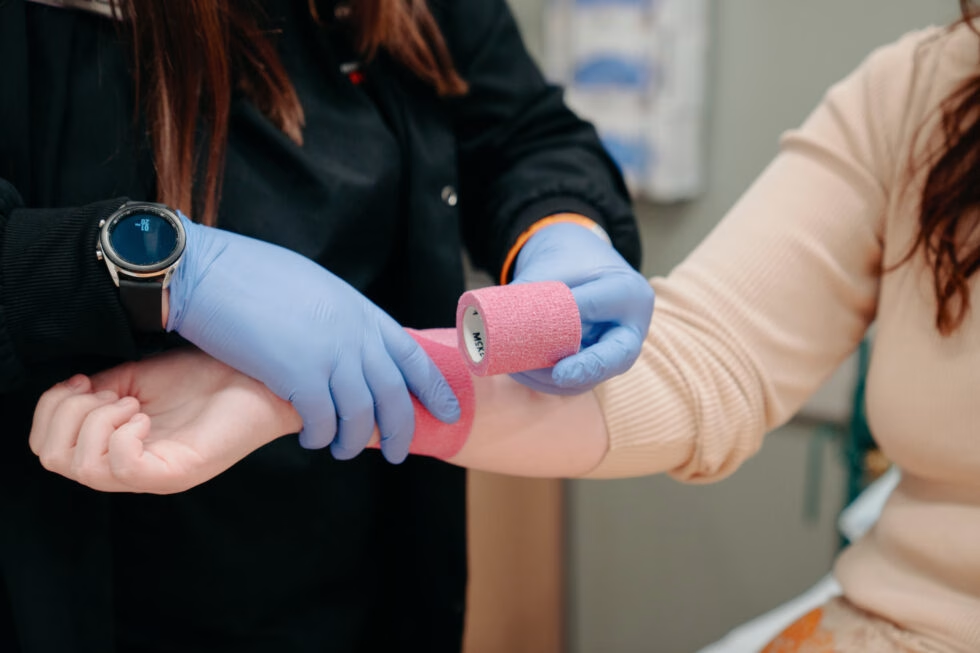
Have you noticed something not so pleasant coming out of your toe? It might be time to check into AFC urgent care in Dalton and here’s why.
Maybe it started out as an annoying ache when you were walking around Haig Mill Lake Park. Then it turned into persistent pain every time you put on shoes. Now there’s pus coming out of your toenail – and that’s definitely something to be concerned about. Pus almost always indicates the presence of an infection. Certain infections around the toenail and even fingernails are fairly common and shouldn’t be ignored.
Knowing what pus is, why it happens and how to treat and prevent toenail infection can help you protect your foot health and avoid future problems.
What Is Toenail Pus?
Pus is a thick fluid made up of dead tissue, bacteria and infection-fighting white blood cells. It’s part of your body’s natural defense system, collecting at the site of infection as your immune system tries to fight off the invader.
Toenail pus can appear in different colors: white, yellow, green or even brown, and sometimes has a strong odor. The color and smell often depend on the type of bacteria or fungi causing the infection.
Other Symptoms of an Infected Toenail
If you’re noticing pus, you’ll likely see other warning signs of infection as well, such as:
- Redness and swelling around the toenail
- Soreness or tenderness, especially when pressure is applied
- Thickened, cracked or yellow toenails
- Warmth or throbbing around the affected toe
These symptoms are specifically common with ingrown toenails but can also develop from other types of nail infections.
How Did My Toenail Get Infected?
An infection in the skin surrounding the toenail is known as paronychia. It usually begins with a small cut or irritation that allows bacteria or fungi to enter. Common causes include:
- Cutting toenails too short or curving them at the edges
- Picking at or trimming the skin around the nail
- Ingrown toenails
- Wearing tight shoes that press on the toes
Certain people are more prone to infections. Individuals with diabetes or weakened immune systems (such as those with HIV) are at higher risk since their bodies have a harder time fighting off infection.
Should I Seek Medical Care?
Not every infected toenail needs immediate medical care, but the severity of your symptoms will determine your next step.
- Mild cases: If your toenail is slightly red or sore without pus, you may be able to manage it at home. A simple soak in warm water with salt can ease pain, reduce swelling and soften the nail, making it easier to gently lift if it’s ingrown.
- Severe cases: If your toenail is producing pus, has a foul odor, is becoming more swollen or the redness is spreading, it’s time to see a health care provider. These signs mean the infection has advanced and likely requires prescription treatment.
How Are Infected Toenails Treated?
The treatment depends on what’s causing the infection:
- Bacterial infections: Typically treated with antibiotic creams or oral antibiotics.
- Fungal infections: Managed with antifungal creams or pills. While some antifungals are available over the counter, stubborn infections often need a prescription.
- Ingrown toenails with infection: In some cases, a health care provider may need to remove part of the nail to help it heal properly and prevent recurring issues.
- Serious infections: Sometimes an ingrown toenail is too severe and a referral to a podiatrist is needed. AFC Dalton is equipped to refer you to a local podiatrist who may have to surgically remove the whole nail.
How to Prevent Toenail Infections
While infections can happen to anyone, good foot care can go a long way in lowering your risk. Here are some helpful tips:
- Trim nails straight across: Cutting toenails in a curve increases the risk of ingrown nails. Keep them even and straight across.
- Wear proper footwear: Shoes that are too tight can cause rubbing and pressure on the toes, which may lead to cuts and infections.
- Keep feet clean and dry: Wash your feet daily, dry them thoroughly (especially between the toes) and change socks regularly.
- Inspect feet regularly: This is more important for athletes and those with diabetes or weakened immune systems, since early detection of cuts or changes can prevent infection from taking hold.
Final Thoughts
If you notice pus coming from your toenail, it’s a clear sign something isn’t right. While mild redness or soreness can sometimes be treated at home, pus, foul odor or worsening pain means it’s time to seek medical care. With the right treatment – whether antibiotics, antifungals or nail care, you can get relief and stop the infection from spreading.
And remember: AFC Dalton is here to help if an ingrown toenail turns into something more. We’re open every day with extended hours. Don’t let the pain get worse, walk into our clinic today.


